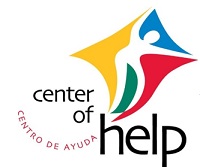Microdosing shrooms, or the ingestion of sub-perceptual doses of psilocybin mushrooms, has gained popularity for its proposed benefits on mental health and cognitive functioning. With the growing interest in this practice, some are even looking into options to buy shrooms for microdosing purposes. Psilocybin, the active psychedelic compound in mushrooms, is typically consumed in small fractions—ranging from one-tenth to one-twentieth of a full dose—that does not induce a full psychedelic experience. This practice is thought to enhance mood, creativity, and productivity while minimizing the psychoactive effects that come with higher doses of psychedelics.

Individuals interested in microdosing often experiment to find their ‘sweet spot,’ an optimal dosage unique to their physiology, which can differ based on various factors like age, emotional state, and biological differences. Although anecdotal reports suggest potential advantages, the scientific community remains cautious due to the current lack of substantial evidence to validate these claims. Researchers continue to study the effects of psilocybin at both micro and macro levels to understand its impacts on the brain and mental well-being.
As interest in alternative health practices rises, microdosing shrooms have become part of the cultural lexicon surrounding psychedelics and self-improvement. Despite the growing anecdotal support, it remains important for individuals to approach microdosing with an understanding of the potential risks and the current legal status of psilocybin mushrooms in Canada, where they remain a controlled substance outside of approved research settings. The dialogue between empirical inquiry and personal experience continues to shape the conversation on microdosing and its place in mental health practice.
Understanding Microdosing
Microdosing involves the regular consumption of very small quantities of psychedelic substances in order to enhance cognitive function, creativity, and emotional well-being without inducing full-blown hallucinations.
What Is Microdosing?
Microdosing is the practice of ingesting sub-perceptual doses of psychedelics, typically ranging from 0.1 to 0.5 grams of substances like psilocybin mushrooms. This method allows individuals to experience subtle physiological and psychological changes without the intense effects associated with larger doses.
The Science Behind Psilocybin
Psilocybin, the active compound in certain species of mushrooms, is a serotonergic psychedelic. When ingested, psilocybin is metabolized into psilocin, which closely mimics the neurotransmitter serotonin and binds to serotonin receptors in the brain. This interaction is believed to influence mood, cognition, and neuroplasticity, facilitating enhanced problem-solving abilities and promoting changes in consciousness.

Potential Benefits and Effects on Mental Health
Microdosing psilocybin has been reported to offer a multitude of mental health benefits. Users often cite improved mood, reduced anxiety, enhanced focus, and increased energy levels. Clinical trials have investigated psilocybin’s potential in treating conditions such as depression and stress, moving towards the potential for psychedelic-assisted therapy.
Comparing Psilocybin with Other Psychedelics
While psilocybin is one of the more commonly microdosed substances, other psychedelics like LSD and mescaline are also used. Psilocybin is often highlighted for its potential to enhance creativity and productivity with a lower risk of triggering tolerance compared to other psychedelics. However, it is important to compare effects, dosage, and biology between substances, as each interacts differently with the brain’s serotonin receptors and overall neurotransmitter systems.
Practical Aspects of Microdosing
Microdosing psilocybin mushrooms, a practice often associated with enhanced creativity and mental clarity, involves several practical considerations to ensure safe and effective use.
Establishing the Right Dose
The optimal dose of psilocybin for microdosing varies per individual, generally falling between 0.05 to 0.40 grams of dried mushrooms. The precise amount should result in no perceptible hallucinogenic effects, instead aiming for subtle physiological changes, such as slight increases in energy or emotional balance. An individual’s body weight, sensitivity to psilocybin, and personal tolerance play a determining role in establishing this dose.

Dosage Protocols and Intention Setting
Dosage protocols, like the widely recognized Fadiman protocol, suggest consuming a microdose every three days, allowing a period of observation and rest. Intention setting is integral to the microdosing process, requiring individuals to clearly define their reasons for microdosing, be it for personal development or to help manage mood disorders. Adhering to an established routine can provide structure and contribute to the therapeutic potential of the practice.
Sources and Preparation of Psilocybin Mushrooms
Psilocybin mushrooms such as Psilocybe cubensis, including strains like Golden Teachers and Penis Envy, are known for their potency and are commonly used. The mushrooms can be ground into a powder to allow for precise dosing and can be ingested directly or often prepared as a tea for ease of consumption. Proper storage and handling are vital to maintaining the mushrooms’ integrity.
Safety Considerations and Legalities
Microdosing remains under-researched, and the long-term effects are largely unknown, warranting caution. Side effects might include impaired focus or unexpected psychological challenges. It’s imperative to consult a health care provider before starting microdosing, especially for those on medications, such as antidepressants, due to potential interactions with serotonin levels.
Despite anecdotal reports of benefits, psilocybin is a controlled substance in Canada, classified as illegal outside of regulated medical trials or therapy sessions. Access to psilocybin for microdosing must be approached with an understanding of the legal issues and risks involved to ensure responsibility and compliance with the law.

Microdosing in Modern Culture

The contemporary resurgence of microdosing mushrooms draws on historical practices, garners support from key advocates, and is linked to potential enhancements in creativity and productivity.
From Indigenous Practices to Western Interest
The concept of consuming low doses of psychedelics, particularly mushrooms, traces back to indigenous cultures like the Aztecs, who utilized these substances for spiritual and healing purposes. Today, Western society has rekindled interest in these practices, spurred on by burgeoning scientific research and a fascination with nature’s potential to influence mental health. The Fadiman protocol, named after James Fadiman, a pivotal figure in psychedelic studies, outlines guidelines for a systematic approach to microdosing, aiming to gain the benefits of increased focus and energy without the full-blown psychedelic experience.
Influential Figures in the Microdosing Movement
Paul Stamets, a mycologist, and James Fadiman, a psychologist and author of “The Psychedelic Explorer’s Guide,” are two leading proponents of microdosing psychedelic substances. Their contributions include a wealth of knowledge on various species and strains of mushrooms, such as Liberty Caps, and studies on the effects of microdosing on consciousness and problem-solving abilities. They advocate for intentionality in the use of microdoses to potentially aid with issues such as depression and anxiety, as well as addiction.
The Role of Microdosing in Creativity and Productivity
The sub-perceptual effects of microdosing, often described as doses low enough not to elicit overt visuals or changes in consciousness, are said to enhance creativity, problem-solving, and productivity. Users report a heightened sensitivity to their surroundings and an improved connection to their work. However, as scientific exploration continues, researchers are cautious to note that these claims require further empirical validation. The community seeks additional funding for studies to understand the impact of microdosing on physical health and to further investigate its role in treating conditions like major depressive disorder.











































